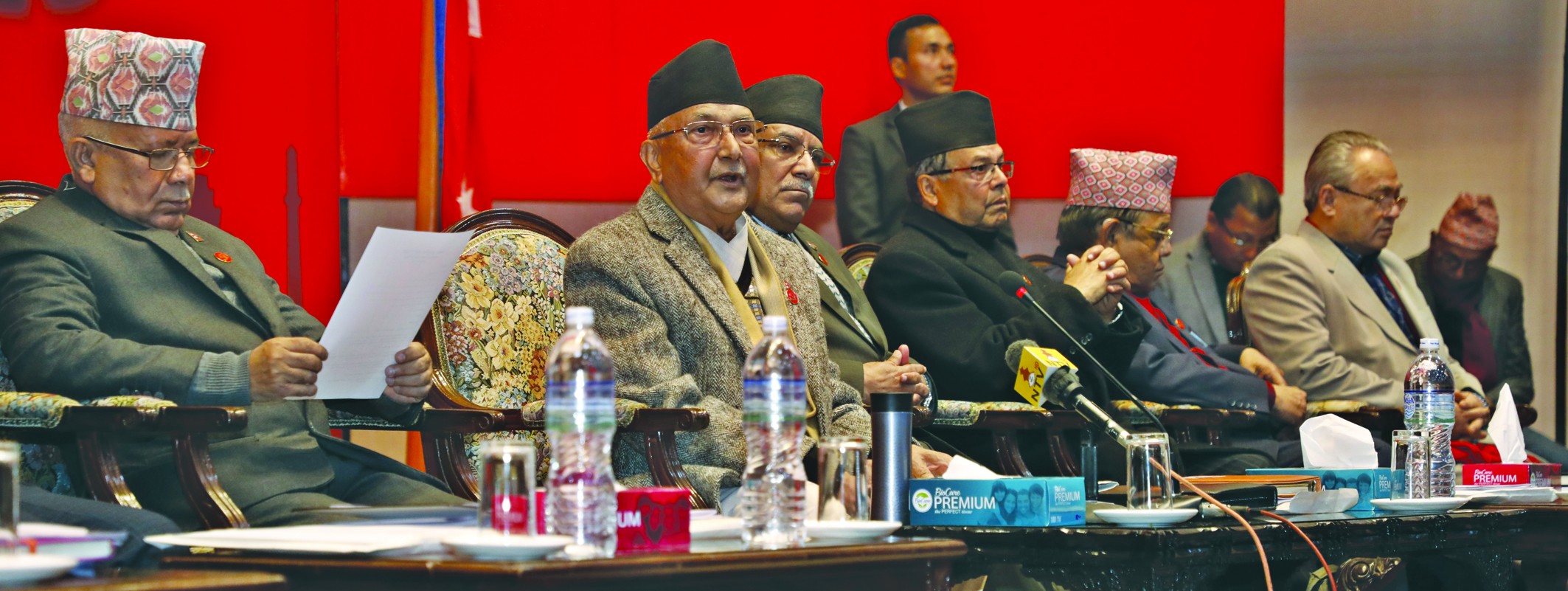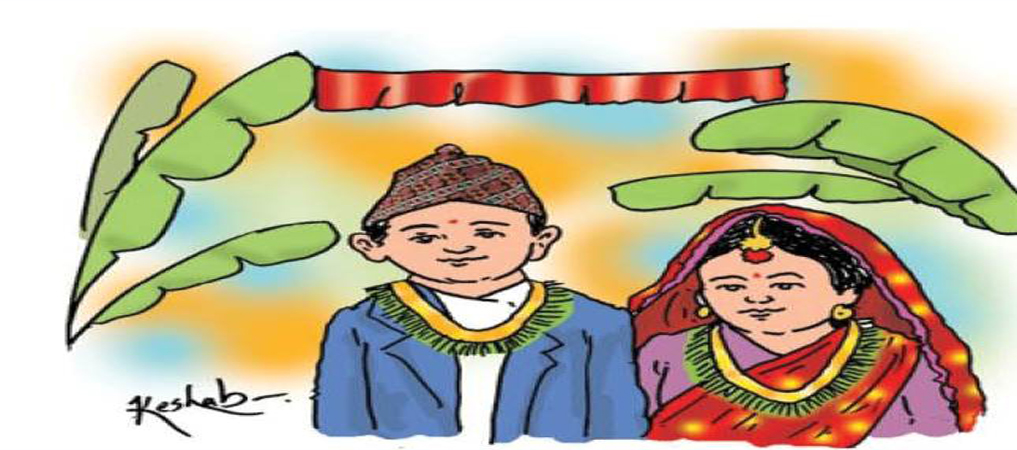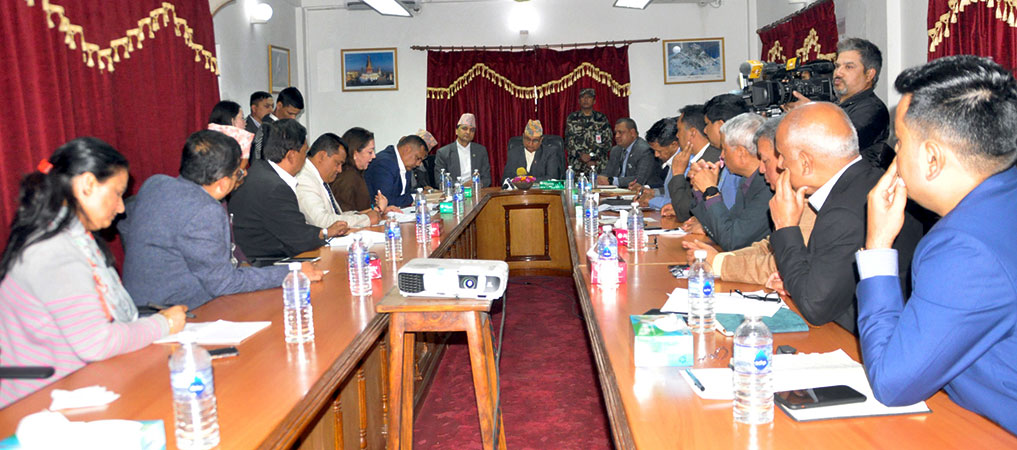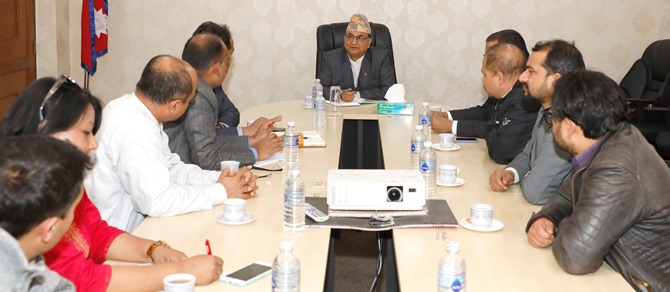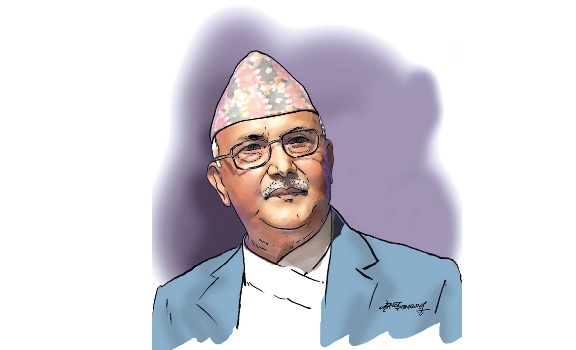Groundwater recharge begins from Gongabu
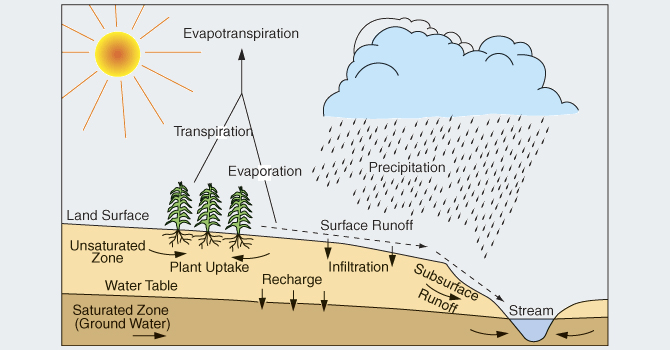
By Arpana Adhikari
Kathmandu, Feb. 22: With the growing urbanisation, the earth surface of the Kathmandu Valley is being haphazardly sealed by cement and concrete which has blocked water from entering inside the land surface.
Consequently, ancient water sources of the valley like stone spouts, ponds and wells, which used to be the reliable sources of water, are now drying up.
More than half of the stone spouts inside the valley have already dried up and the quantity of water retrieved from the soil below has increased manifold due to water scarcity.
Aiming to revive hydrological process of recharging groundwater, the Kathmandu Metropolitan City has initiated water recharge system in Gongabu settlement, which falls under the planned settlement project of the city office.
The system was installed under the KMC’s Recharge Kathmandu programme to meet the growing water demand in the city.
The office installed the system with the technical support of Integrated Urban Development Centre and in coordination with Gongabu Settlement Area Improvement Committee and locals.
The system was installed in one ropani of land. Small recharge pit
holes are created in the land, from where the rain water will be harvested and water collected in the catchment will be passed and collected beneath the ground to replenish the groundwater.
Mayor Bidhya Sundar Shakya said, “The system was installed as per our plan to introduce Recharge Kathmandu programme. This is like learning for us. After evaluating the outcome of this project, we will install water recharge system in each ward and in every open space of the city.”
The KMC has expected to revive the hydrological process and bring balance in environment, said Mayor Shakya, adding that this would also meet the growing water demands and denizens would soon realise the improvement.
Deputy Mayor Hari Prabha Khadgi Shrestha said because the authority had failed to preserve the traditional water sources of the valley, majority of them had already dried up.
“The programme is initiated to relieve city denizens from water scarcity,” said Khadgi.
Ward Chair Khyam Rak Tiwari shared his happiness that the Recharge Kathmandu project was initiated from his ward.
“We have a plan to expand this system in other locations as well. But the water recharge system should be improved,” he added.
Chair of the Gongabu Settlement Area, Mahesh Kumar Shrestha assured that they would work to make the system sustainable.
The water recharge system is the simple collection or storing of water in the water tank through scientific techniques from the area where the rain falls. When rainwater falls on the ground, it seeps down to water table through solid voids and goes to aquifers.
Total three catchments and two recharge pits are constructed in the location. Of the two recharge pits, one is 24 feet deep and 42 inch wide and another is 14 feet and 42 inch wider, said Nisha Koirala, Engineer at KMC’s Environment Management Division.
Both the recharge pits are filled with boulders, gravel and coarse sand in graded form, which will absorb runoff water and help recharge underground water, she added.
The city office has also installed similar system in nearby nursery, where one catchment and one recharge pit are installed.
The city office has invested Rs. 500,000 for the installation of the system, said Koirala adding that this system would refill around 767,000 liters of rainwater in a year.
As per the study conducted by the Ground Water Resources Development Board, the groundwater level of the valley has been gradually declining.
In the past, water used to be found at 8-10 metres below the ground of the valley, but now it’s hard to find water even by digging 40-50 metres.
Earlier, the Kathmandu Upatyaka Khanepani Limited (KUKL) used to extract 1,000 litres per minute from the deep boring. But now it has declined to 700 liters per minute.
Since there is no earth space to absorb water, lately the valley has been witnessing flood in every monsoon. Almost 83 per cent land of the Kathmandu is sealed with cement and concrete, which is blocking water from entering inside land surface, said experts.
This has directly affected the ground water level in the valley.
As per the study carried out by JICA in 1990, if almost 150 million liters of water was extracted from the valley, then this would cause drop in water level and invite major natural imbalance.
But the KUKL itself has been extracting around 80 million liters of water daily from 80 deep borings to supply water inside the valley, which is two times more than the water recharge ratio of the valley.
According to the Kathmandu Valley Water Supply Management Board, approximately 35-50 per cent of the valley’s population rely on underground water.
Private water extraction by households and industries and water vendors is rampant in the valley.
As per the board, so far 750 private water extractions by households, factories, industries, hotels and hospitals, among others, have taken permission to install tube well and deep boring, which accounts for 70 per cent of the total deep boring in the valley.
Recent News

Do not make expressions casting dout on election: EC
14 Apr, 2022
CM Bhatta says may New Year 2079 BS inspire positive thinking
14 Apr, 2022
Three new cases, 44 recoveries in 24 hours
14 Apr, 2022
689 climbers of 84 teams so far acquire permits for climbing various peaks this spring season
14 Apr, 2022
How the rising cost of living crisis is impacting Nepal
14 Apr, 2022
US military confirms an interstellar meteor collided with Earth
14 Apr, 2022
Valneva Covid vaccine approved for use in UK
14 Apr, 2022
Chair Prachanda highlights need of unity among Maoist, Communist forces
14 Apr, 2022
Ranbir Kapoor and Alia Bhatt: Bollywood toasts star couple on wedding
14 Apr, 2022
President Bhandari confers decorations (Photo Feature)
14 Apr, 2022


